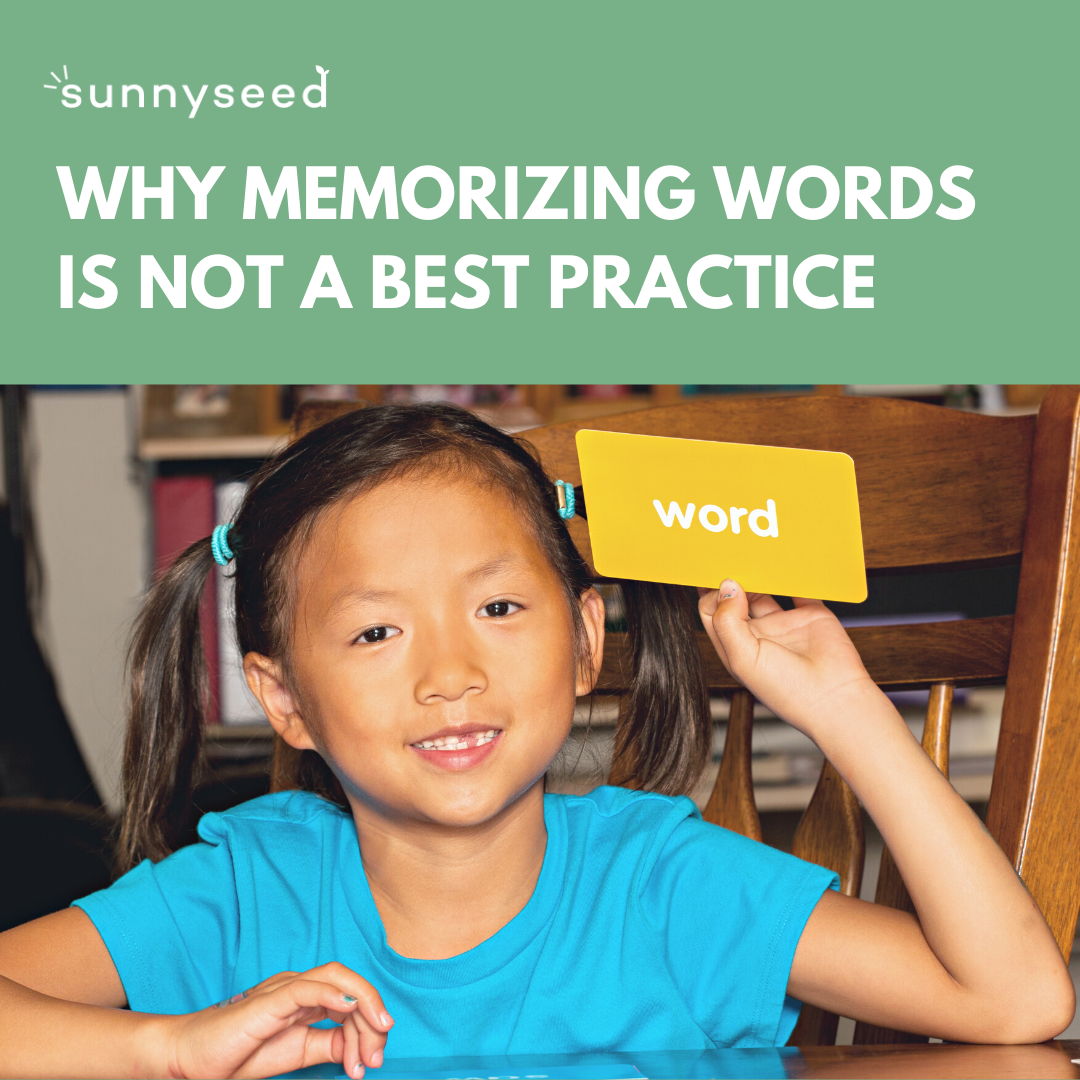Science of Reading & Educator Training
Learning how to read is one of the most important skills we will teach children. It affects all areas of academic achievement and is associated with social, emotional, economic, and physical health. It has been the most researched aspect of human cognition, yet we have a major literacy crisis in our country: only 35% of students are reading proficiently. Ironically, 95% of students CAN learn to read when instruction is based on the science of reading, so we must consider what is causing such a large gap? Why are so many children struggling to read? In this blog post, we explore what the science of reading has taught us over the last five decades, and recommended training to provide you with the clarity, tools, and confidence necessary to deliver effective, structured literacy instruction.
WHAT IS THE SCIENCE OF READING?
The science of reading (SOR) is a comprehensive, conclusive body of research that definitively answers the question: “How does the human brain learn to read?”
The Science of Reading is derived from more than five decades of researchers in multiple fields:
Cognitive Psychology
Communication Sciences
Developmental Psychology
Education
Special Education
Implementation Science
Linguistics
Neuroscience
School Psychology
SOR has culminated in a preponderance of evidence to inform how proficient reading and writing develop; why some have difficulty; and how we can most effectively assess and teach and, therefore, improve student outcomes.
It is not a literacy method or curriculum, philosophy, fad, pendulum swing, or one-size-fits-all approach, but a conclusive body of evidence to inform literacy instruction, ensuring ALL students are given the opportunity to become successful readers.
“Unfortunately, much of this research is not yet included in teacher preparation programs, widely used curricula, or professional development, so it should come as no surprise that typical classroom practices often deviate substantially from what is recommended by our most credible sources. As a result, reading achievement is not as strong as it should be for most students.” - Louisa C. Moats
This empirically supported research provides us with the information we need to gain a deeper understanding the development of reading skills, how we learn to read, and which parts of the brain are responsible for reading development. Here are some key takeaways:
The SoR has debunked various methods used over the years to teach reading that were not based on scientific evidence:
Balanced literacy
teaching one letter a week
leveled reading
guided reading
whole word language memorization
Most reading difficulties can be prevented in young students. Movement, play, early literacy skills, phonemic awareness, and alphabet knowledge are critical. One cannot understate the importance of a child’s first three years of life, which lays the foundation for future learning, growth, and development.
Intervention studies have demonstrated the effectiveness of intensive phonemic awareness training, intensive phonic decoding training, and opportunities for repeated practice with reading controlled text.
Reading is not a natural process, like learning how to speak. Since neural connections required for reading do not exist between these areas in the pre-literate brain, efficient pathways are built with explicit instruction and deliberate practice.
Teaching whole word memorization is limited and can cause a plethora of complications. Instead, we should focus on phonics and orthographic mapping: How to Teach Sight Words.
If a child memorizes ten words, then the child can read ten words. But, if the child can learn the sounds of ten letters, the child can read…
350 three-sound words
4,320 four-sound words
21,650 five-sound words
Reading development can be divided into three stages:
Letters and sounds: Letter-sound knowledge is essential for both phonic decoding and sight-word learning.
Phonic decoding: Early phonological/phonemic awareness skills enable the development of letter-sound knowledge and should be targeted for direct instruction through first grade. Advanced phonological awareness skills should continue to be assessed and practiced through third grade to ensure that a solid orthographic lexicon is established.
Orthographic mapping: Understanding orthographic mapping allows for teachers to support students who struggle to read. Orthographic mapping is the process that occurs when unfamiliar words become automatic sight words.
Learning to spell is far more complex than just memorizing words, and is directly connected to phonics. Encoding (spelling) is a developmental process that impacts fluency, writing, pronunciation, and vocabulary.
“We teach reading in different ways; yet they [students] learn to read proficiently in only one way.” The Science of Reading (SoR) has demystified any wonder of how we learn to read and offers evidence backed by science to confirm that there is one right way to teach reading.” - David Kilpatrick
STRUCTURED LITERACY
Structured Literacy™ is an evidence-based best practice approach for teaching foundational literacy skills based on the Science of Reading:
EXPLICIT - Direct teaching of rules and patterns of the language are explicitly taught.
SEQUENTIAL - Concepts are taught in a well planned and logical sequence where a concept must be mastered before moving onto the next.
CUMULATIVE - Lessons build upon previously learned concepts with constant review and reinforcement.
MULTI-SENSORY - Connections are made using the visual, auditory, kinesthetic, and tactile pathways, which increase memory, motivation, and understanding.
SYSTEMATIC - Begins with the most basic levels of phonics and develops into more advanced phonological concepts, think “walk, crawl, run.”
STRUCTURED - Concepts are taught in the same routine every time.
DIAGNOSTIC - The teacher is continuously monitoring the student’s reading, spelling, and writing, and planning lessons in response.
RECOMMENDED TRAINING
If any of this sounds overwhelming or confusing, fear not! There are two professional training opportunities, aligned with the Science of Reading, to strengthen your skillset. Thankfully, one does not need a master’s degree in reading instruction to find confidence and success in this area. (I am not affiliated with either training.)
Homeschool Parents: It is a beautiful calling and profession to champion your child’s education and development. As with any profession, homeschooling includes ongoing training and development. I strongly recommend familiarizing yourself with the Orton-Gillingham approach.
Reading Tutors: I would only recommend a Orton-Gillingham certified reading tutor.
Teachers: I understand how frustrating it is to complete undergraduate training that doesn’t completely support your profession. Only 30% of undergraduate teacher prep programs adequately cover all five core components of scientifically based reading instruction. Thank you for approaching reading instruction with an eagerness to continually learn and serve your students. Many districts are now supportive of additional reading training. The Reed Charitable Foundation also offers scholarships and low-cost training.
ORTON-GILLINGHAM
If you want to gain a deep, thorough knowledge of the English language and how to teach phonics properly, choose Orton-Gillingham (OG). This training is the most practical and the biggest bang for your buck, in my professional opinion.
Orton-Gillingham is an evidence-based Structured Literacy approach that uses research from the SoR and incorporates recommended multi-sensory instructional techniques.
This approach is a “direct, explicit, multisensory, structured, sequential, diagnostic, and prescriptive way to teach literacy when reading, writing, and spelling does not come easily to individuals.” Friends, this type of instruction can benefit ALL students, even those with dyslexia.
This training heavily focuses on phonics, and does not include much on phonemic awareness, vocabulary, comprehension, or fluency. However, I feel that phonics is the most difficult pillar to teach and requires the most training. You will leave with practical tools that transform a child’s reading experience.
The two main OG organizations that offer training are IMSE and AOGPE. I personally only have experience with IMSE. Cost is $350-$2400.
OG is considered an approach, not a curriculum, so you will be able to take your training and apply it with other materials.
Wilson is a curriculum based on OG, but it’s not as user friendly in my opinion.
These methods can be taught whole group, small group, or 1:1 instruction.
LETRS (Language Essentials for Teachers of Reading and Spelling)
If you’re looking for a comprehensive training on all five pillars of reading instruction (phonemic awareness, phonics, vocabulary, fluency, comprehension), this the training for you. It’s actually what I took in my Master’s program, which completely opened my world to the science behind how the brain learns how to read. I found it to include the necessary background and some application – the why and how!
LETRS is “a flexible, literacy professional development solution for preK–5 educators. LETRS provides teachers with the skills they need to master the fundamentals of reading instruction—phonological awareness, phonics, fluency, vocabulary, comprehension, writing, and language.”
Sadly, you must go through a school district or university to attend LETRS training. Some books are still available on Amazon, but you won’t have access to the online trainings.
LETRS also offers an annual conference.
PATHWAYS BRIDGE THE GAP
This is a free training for teachers using the Pathways reading curriculum. You can view all three sessions here.


































